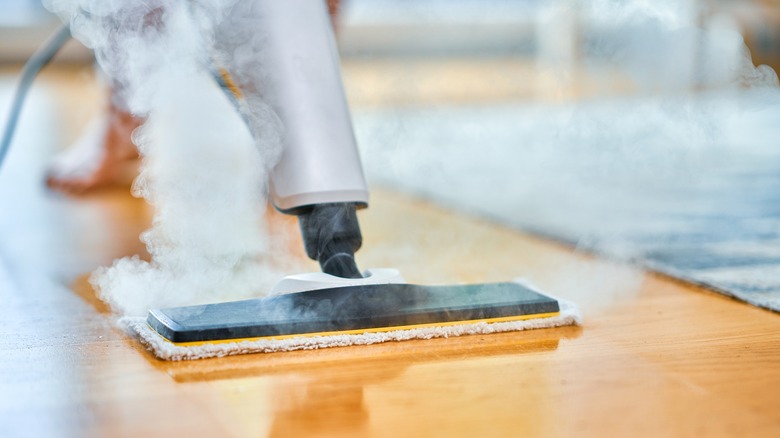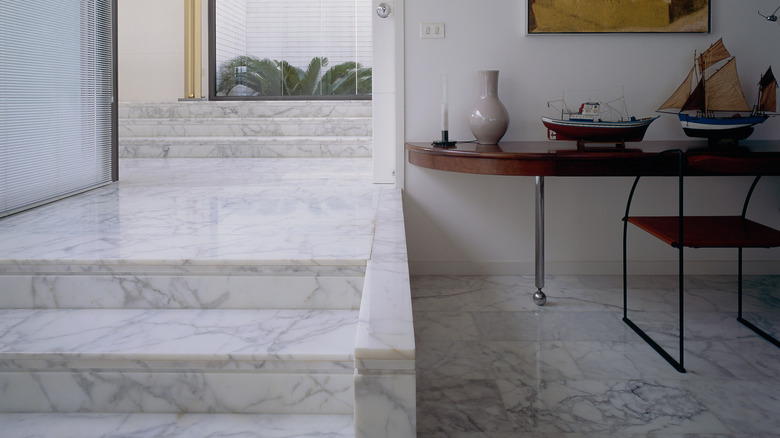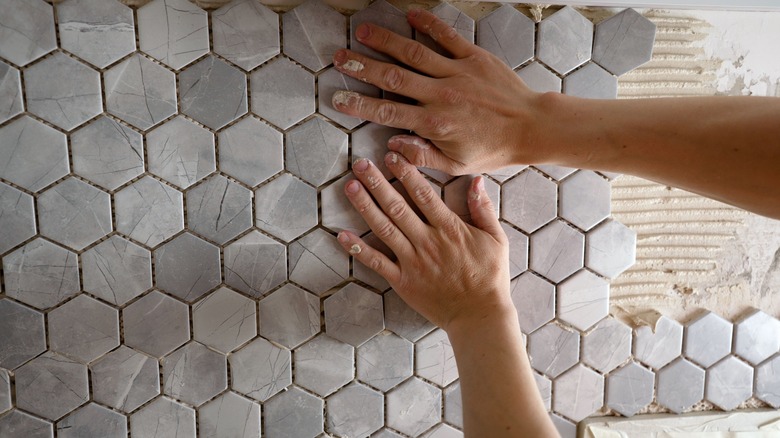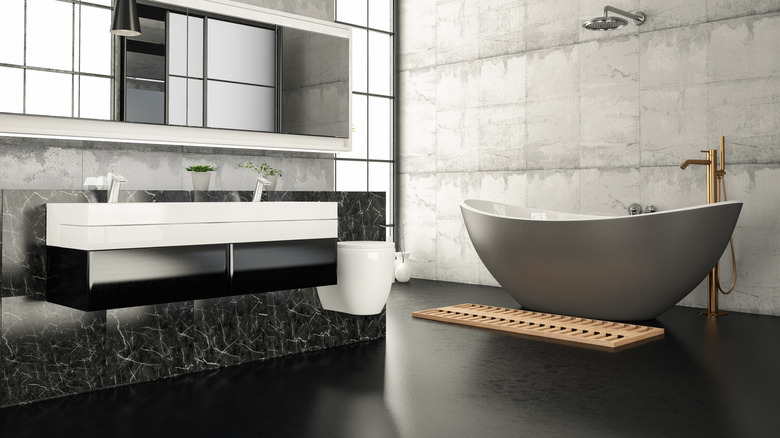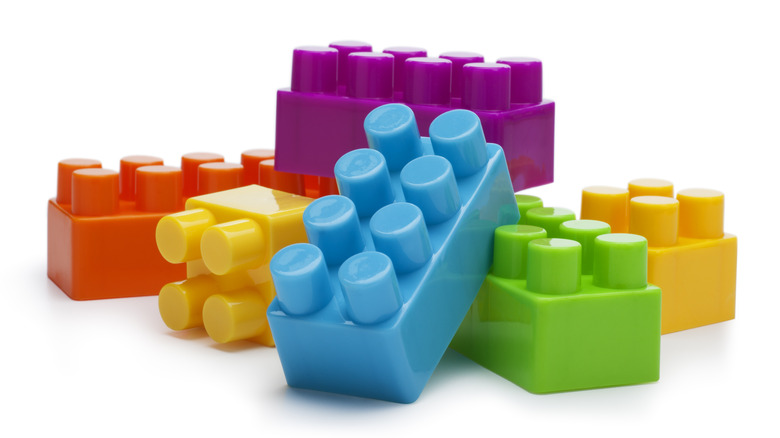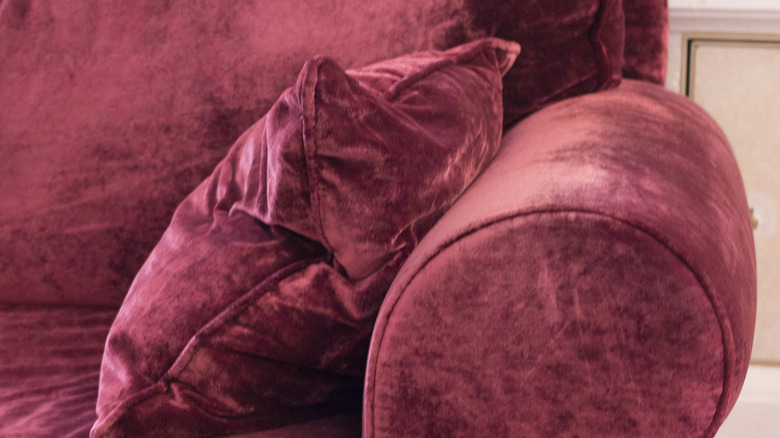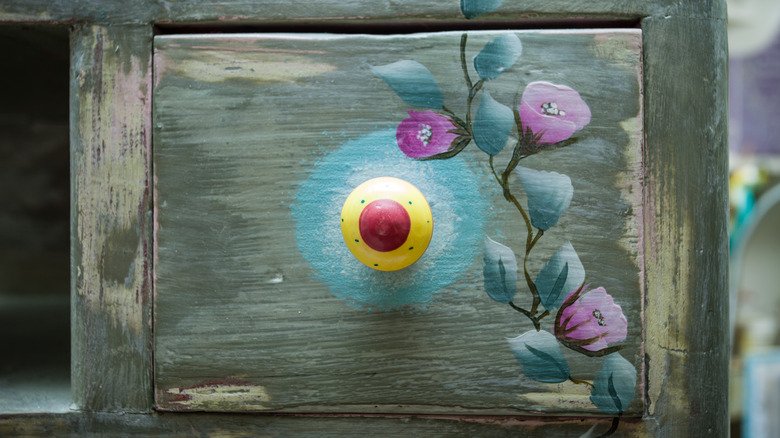Avoid These Areas When Steam Cleaning Your Home
Steam cleaning is an excellent method to produce spotless, sanitized surfaces throughout your home. Steam mops and handheld steam cleaners offer ease of operation along with chemical-free cleaning for a safe and healthy home environment. However, the high heat and moisture from these devices may damage some materials. Because of that, there are some places in your home where steam cleaning might do more harm than good.
A steam cleaner heats water and then emits pressurized steam at an average temperature of 245 degrees Fahrenheit. It's a useful process for melting dirt and grime, killing germs, and removing allergens from the non-porous surfaces in your home. However, the heat and moisture can damage porous surfaces, including wood, laminate, and bamboo floors, as well as natural stone and polished concrete flooring. But that's not all. Below are all the areas to skip when steam cleaning. Some might surprise you.
Natural stone floors
Floors made of granite, marble, and other natural stone materials provide an elegant vibe and a durable surface in your home. It might be tempting to clean them with steam, but steam cleaning can harm these materials. You may think that a sealed stone floor would be impervious to damage. However, the hot steam can strip away the sealer, leaving the porous stone and the surrounding grout susceptible to damage from moisture and high heat. The heat from a steam cleaner will cause natural stone to expand, followed by contraction upon cooling. This movement results in cracks and pits.
It's not uncommon for natural stone to contain hairline cracks that are neither visible nor problematic. However, steam pressure can cause these cracks to open up and expand. Additionally, it may result in pitting and flaking of the stone's surface. If the stone contains iron, the moisture from steam can initiate oxidation, creating discoloration or rust spots that mar the beauty of your floors. Some natural flooring, such as travertine, features small holes as a result of the natural limestone formation in the earth. These holes are filled when the flooring tiles are manufactured, but pressure from a steam cleaner can cause the filling material to pop out. This condition leads to cracking and deterioration of the natural stone.
Laminate floors
If you have laminate floors in your home, you're in good company. They're tremendously popular among homeowners because they're durable, good-looking, and easy to clean. However, laminate floors should not be cleaned with steam. Although the laminate features a water-resistant surface, the inner material is made of fiberboard. This is an engineered material made from wood fibers, and the moisture and pressure from a steam cleaner can easily damage it.
Steam cleaning can force moisture and heat through the joints and beneath the surface of laminate flooring. As a result, the flooring swells and warps. Additionally, the laminate top surface may separate from the inner fiberboard, and the joints can widen. You should clean your floors with a microfiber mop and a spray cleaner that is specially formulated for the job. The primary guideline is to avoid excessive moisture, so it's important to nix the heat, pressure, and water that steam cleaning uses.
Wood and bamboo flooring
Steam cleaners operate on a system where water is heated past the boiling point, pushing the resulting steam out with strong pressure. When it comes to hardwood, engineered wood, and bamboo flooring, the pressurized steam forces heat and moisture into the porous materials. This spells disaster for these types of floors, resulting in warping and buckling. Once water enters the wood or bamboo material, it causes the interior fibers to swell. Then, when the fibers dry out, they shrink. The uneven swelling and shrinking processes cause deformation that can be seen throughout the planks, and a warped floor will require expensive repairs or replacement.
You might think that steam cleaning is safe for a sealed floor. However, there's a high probability that moisture will enter through the joints between planks. For cleaning these surfaces, it's wise to stick to a vacuum cleaner and a dry dust mop. When more rigorous cleaning is necessary, use a damp (not wet) microfiber mop with an appropriate cleaning agent.
Unsealed tile and grout
Steam cleaning is an efficient way to sanitize surfaces in kitchens and bathrooms without using chemical-laden cleaning products. On sealed tile and grout, it's a convenient and non-harmful process. However, the steam cleaning process damages unsealed tile and grout, leading to unsightly water stains. The heat and pressure from a steam cleaner can cause unsealed grout to erode and chip away. Additionally, it pushes moisture below the surface, which can lead to mold and mildew growth.
Before using steam, take steps to ensure that the surfaces are thoroughly sealed. Flooring that has recently been installed may not be sealed yet. Alternatively, the sealant on old flooring may have aged and worn away, leaving certain areas vulnerable, especially in the grout. Sanded grout is particularly porous and susceptible to damage from steam cleaning, and colored grout may fade from this process. If you have doubts about its strength and impermeability, avoiding the steam-cleaning process is a safe practice.
Polished concrete flooring
With the recent surge in the popularity of modern industrial decor, concrete is the preferred flooring option. For healthy indoor living areas, many people turn to polished concrete as a non-allergenic material. The natural pores in polished concrete are sealed with grout, creating a smooth surface that does not absorb allergens. However, a steam mop's heat and pressurized steam force the grout out. This sets up a situation where mold spores, pollen, dust mites, and other allergens live in the pores of the concrete floor. Because of that, it's best to avoid steam cleaning polished concrete and turn to a microfiber mop with plain, hot water on cleaning day.
Epoxy-coated concrete floors will stand up to steam cleaning if you only use water. However, the epoxy coating is easily damaged if soap or chemical cleaning agents are added to the mix. Of course, unsealed concrete has long been used as a strong material for outdoor hardscapes as well as the floors in garages and basements. The concrete in these areas is built to withstand abuse, so feel free to use a steam mop. Just keep in mind it absorbs moisture easily, so be sure to allow sufficient time for the material to fully dry out.
Plastic items
It's best to avoid steam cleaning plastic items due to the possibility of melting them. Steam cleaning, by definition, involves extreme heat as water in the machine's boiler converts to steam. The hot, pressurized steam will likely damage plastic items, making them unusable. Additionally, melting plastic may release chemicals that are harmful to children and adults. These include bisphenol A (BPA), a known carcinogen. Additionally, the fumes from melting plastic can cause respiratory problems, skin irritation, headaches, and more.
If you intend to use a steam cleaner on the exterior of your car, it's wise to use precautions around the plastic parts. According to Car Wash Country, the high heat from a steam cleaner reduces to 160 degrees Fahrenheit if you hold the wand at least six inches away from the surface that you're cleaning. This allows you to clean any plastic or rubber on your car, but since there is a large margin for error, it might be safest to avoid it.
Delicate fabrics
When you're cleaning your home's interior, it might be tempting to use a steam cleaner on the upholstery and drapery fabrics. However, the heat and moisture from a steam cleaner can damage many delicate textiles. These include velour, velvet, silk, damask, suede, and faux leather. If you want to stay on the safe side, it's always a good idea to check the label for care instructions on such items.
Before steam cleaning your drapes or a piece of fabric-covered furniture, you should test the cleaning method on a small area that is not seen. This might be the back of a couch or the bottom corner of a drapery panel. Keep in mind that steam cleaning is not safe for any type of velour upholstery. Velour can be cleaned with a damp (not wet) cloth, using mild soap and water. But it cannot tolerate a steam cleaner's high heat and moisture. This is true of any delicate fabrics that are prone to shrinking, melting, or developing water stains.
Surfaces coated in water-based paint
Steam cleaning is not a viable method for sanitizing areas that are coated with water-based paint. In fact, when upcycling furniture, it's recommended to use steam if you don't want to use paint strippers. The heat and moisture from a steam cleaner causes the paint to separate from the surface. As the softened paint bubbles up, you can scrape it away easily, avoiding the hazards of dry paint dust and the fumes from paint strippers.
Painted furniture is currently popular in home decor. Although hitting your painted furniture pieces with a blast of steam on cleaning day might be tempting, it can damage the finishes. Instead, you can safely use a damp (not wet) cloth along with mild detergent and water to wipe down painted furniture. Make sure the piece doesn't get too wet, or else you can end up with watermarks.
Interior walls, paper, and cardboard surfaces
It's best to avoid steam when you're cleaning any materials that absorb moisture. This includes both the painted and papered walls in your home. Drywall, sheetrock, and plaster walls may absorb moisture from steam cleaning, leading to damage. Warping and buckling can occur along with unsightly water stains on the walls. Additionally, moisture absorption from steam may lead to the fungal growth of mold and mildew. If you want to safely wipe down your painted walls, use a solution of 2 to 3 tablespoons of white vinegar diluted in a gallon of water. Saturate a cloth or sponge and wring it out thoroughly before wiping the wall.
Avoid steam cleaning any flooring, furniture, and other items made of fiberboard and particleboard. These materials are made from wood fiber, so they absorb moisture and are prone to swelling and warping. Additionally, things made from paper and cardboard cannot withstand the heat and moisture of a steam cleaner. This includes wallpaper and artwork.
Electrical components and electronic devices
It's a well-known fact that water and electronics do not mix. A steam cleaner emits steam at high heat and high pressure. Due to this action, moisture from the steam is forced into the object that is being cleaned. Water can cause corrosion of electronic parts, such as a circuit board. Ultimately, corrosion damages the device and renders it nonfunctional.
This means that steam cleaning is a no-no for electrical components in your appliances, along with the electronic devices around your home. In most homes, the list is extensive, including TVs, remotes, computers, monitors, tablets, gaming equipment, hair dryers, power tools, and more. If you choose to steam clean the interior of your oven or refrigerator, it's important to keep the steam away from the electrical components of those appliances. Additionally, you should exercise caution if you use a steam cleaner on your car. Keep the steam away from the electronics in the car's interior.
